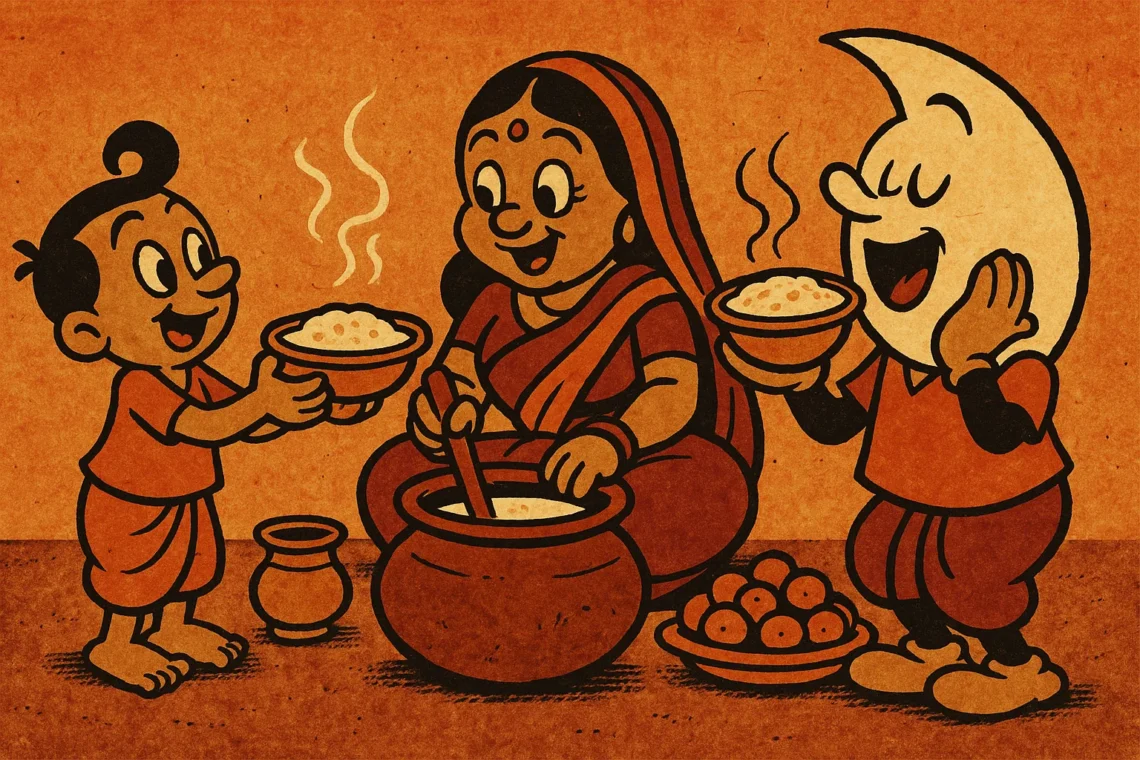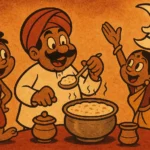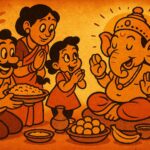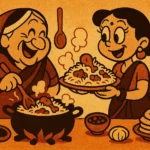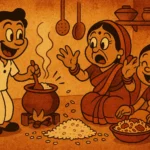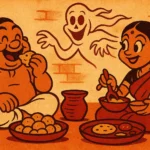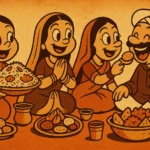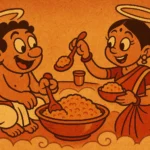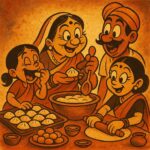Growing up in Mumbai, the smell of kheer (sweet rice pudding) wafting through the house was never just about dessert—it was about tradition, ritual, and the stories that were passed down with each spoonful. Kheer wasn’t something that appeared at any old dinner; it was a sacred food reserved for festivals, family celebrations, and the most special of occasions. As a child, I was captivated not just by the creamy, cardamom-scented rice pudding, but by the stories my grandmother told of why the moon, during certain festivals, was “fed” kheer.
There’s something magical about festival foods in Indian culture. They’re not just about the ingredients or the way food tastes, but the symbolism they carry. Food in Indian festivals is often tied to deep cultural beliefs and folk traditions that link the mundane act of eating with the divine, the mythical, and the magical. This is especially true when we look at how food connects us to the celestial—like when the moon, revered in Hindu mythology, is offered kheer during certain festivals, or how the foods we eat during these celebrations have their own legends and meanings. In many ways, festival foods are a celebration of the stories that bind us to the past, the divine, and to one another.
The Moon and the Kheer: A Sacred Offering
One of my earliest memories of a festival, and a story that’s always stayed with me, was the night of Karva Chauth. This is when married women fast from dawn to dusk for the long life of their husbands. As part of the rituals, after the fast is broken, women offer a prayer to the moon, thanking it for its guidance and asking for blessings. The moon, in this ritual, is more than just a celestial body; it is a symbol of time, change, and protection.
But here’s the thing: before breaking the fast, after the prayers, the moon is offered a small plate of kheer. Yes, you heard that right. The moon itself gets a serving of kheer, or sometimes even fruits, as a way to honor it for watching over the woman throughout her fast. Why kheer? The answer isn’t simple—it’s a combination of symbolism and tradition. Kheer, often made with milk, sugar, rice, and a sprinkle of cardamom, is a dish that signifies purity, sweetness, and abundance. In many ways, offering the moon kheer is not just a part of the ritual but a way of sharing something sweet, nurturing, and fulfilling with the celestial force that governs time and life.
In my childhood home, we would gather as a family during Karva Chauth to share this special meal together. The sight of my grandmother gently placing the kheer in a bowl, offering it towards the moon, and then sharing the same food with us was a moment of connection—both to the divine and to the people we loved. That night, food felt like more than just sustenance; it was an offering, a gesture of thanks, and a shared experience that transcended the act of eating itself.
Folklore and Festival Foods: The Food as Myth
Festival foods in India are often deeply embedded in folklore, where each dish is tied to a myth, a belief, or a tale that has been passed down through generations. The kheer for the moon is only one example of how food intersects with myth. Take the famous *puran poli* eaten during Holi, the festival of colors. According to folklore, this sweet, stuffed flatbread was made to honor Lord Vishnu’s triumph over the demon king Hiranyakashipu. Similarly, the laddoos offered during Ganesh Chaturthi carry their own mythic significance, believed to be Lord Ganesha’s favorite treat, and consuming them is said to bring divine blessings.
But it’s not always the grand, well-known festivals that have these kinds of food-based myths. Even in smaller, more intimate rituals, the foods we prepare carry stories. For example, during *Navratri*, when devotees fast and prepare special foods, the ingredients themselves hold meaning. The *sabudana khichdi* (tapioca pearl dish) eaten during the fast isn’t just to sustain the body—it’s a symbol of spiritual purity and devotion. Every dish, whether savory or sweet, comes with its own history, much like a living folklore that we carry with us every time we cook, share, and eat these meals.
When we sit down to enjoy these festival foods, we’re not just eating—we’re participating in an ancient story. Whether we know it or not, each bite connects us to the past, to the myths, and to the beliefs that have shaped our culture. And that’s what makes these festival foods so special. They’re not just about flavor or nourishment; they’re about heritage, connection, and the continuity of traditions that bind us to the generations before us.
The Spiritual Nourishment of Food
In many ways, the foods we offer during festivals are not just to nourish the body, but to nourish the spirit. The kheer offered to the moon isn’t about feeding a celestial being; it’s about recognizing the divine in the mundane, about making the everyday act of eating a sacred act. Whether it’s the sweetness of the *kheer* during Karva Chauth or the savory *samosas* shared during Diwali, these foods are imbued with meaning far beyond their ingredients. They represent the cycle of life, the connection between the earthly and the divine, and our place in that ever-turning wheel.
Food has always been the bridge that connects us to each other and to the divine. In my childhood, food wasn’t just about the flavors or the textures; it was about the stories that came with it. My grandmother’s kheer wasn’t just something to satisfy my hunger—it was a reminder of the love and sacrifice that came with the traditions she passed down to me. It was an offering, a way of honoring not just the ritual, but the people we loved, the lives we led, and the future we hoped for.
The Magic of Food in Festival Myths
As we celebrate festivals and prepare our favorite foods, we are carrying on centuries-old traditions—traditions filled with meaning, magic, and myth. The folklore that surrounds these foods is a reminder of the deep connection between food, culture, and the divine. When we offer a dish like kheer to the moon, or when we prepare *puran poli* to honor Lord Vishnu, we are participating in a ritual that transcends the act of eating. Food, in these myths, becomes a symbol of love, sacrifice, and spiritual connection, feeding not just the body, but the soul. And in those moments, when we savor these festival foods, we are nourishing ourselves with far more than just flavor—we are savoring the stories that have been handed down through generations.
Born in Mumbai, now stir-frying feelings in Texas. Writes about food, memory, and the messy magic in between — mostly to stay hungry, sometimes just to stay sane.

